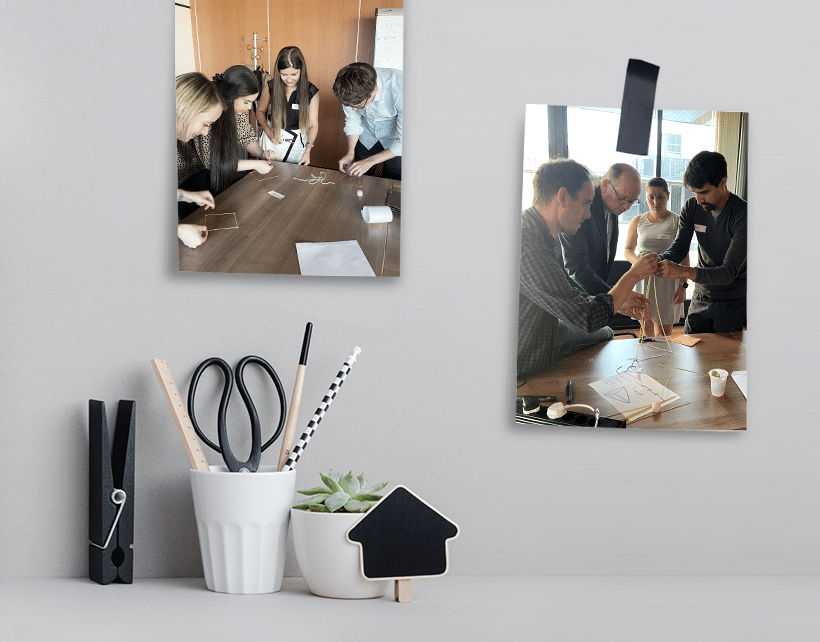
Agile at Viking
Agile methodology has emerged as a powerful way of working in the past decades, allowing teams to streamline their work through an adaptive approach to project management. At its core, Agile methodology prioritises delivering work in clearly defined, well thought-out steps, thus facilitating a fast adjustment to any change or unexpected development in the process. We have taken a deep dive into the Agile methodology in the first instalment of our Agile series and discussed its key principles, but in order to grasp the tangible benefits it might bring to your company, it is important to see a functional example of true Agile methodology in a business environment. In the second part of our series, we are taking a closer look at how Agile thinking is put into work at Viking, through the lens of our Search Engine Advertisement (SEA) team!
Our SEA team is the most recent team to adopt Agile methodology at Viking. While there was nothing particularly amiss about their established way of working, the team was also well-aware that they could considerably increase their productivity to better manage their projects. This is where Agile methodology, and of course our Scrum Masters, came into play. Dedicated to facilitating Agile framework across departments and teams, our Scrum Masters introduced the SEA team to the central tenets of the Agile methodology through a day-long training session. In true Agile style, the training consisted of fully interactive, hands-on activities such as the Marshmallow Challenge, in which the SEA team competed in smaller groups to build a durable replica of the Eiffel Tower only using spaghetti and marshmallows. Although not every Eiffel Tower survived the antics of our Scrum Masters, the team believed that the training activities were a solid kick-off to understanding and implementing Agile principles into their day-to-day work.
The team also received a comprehensive overview of Agile principles from the Scrum Masters, and discovered that with some of their practices, they were already utilising Agile methodology to an extent. By carrying out a detailed discussion session, which involved a lot of post-its and free-flowing brainstorm diagrams on multiple whiteboards, they saw that they were successfully carrying out standps to keep each other informed on different projects and processes. Not only that, but the team was actively communicating to share workload and tasks between each other whenever needed, a key principle of the Agile Methodology. However, they also agreed that while the team already had some of the basic ideas of Agile in practice, they were missing a proper structure, which made establishing a framework their utmost priority.
After the workshop, we talked to some of the participants to get their experience first-hand, and discussed some of the main takeaways the SEA team had from their Agile training. Branislav, Online Marketing Specialist within the SEA team, thought that the workshop was a clear confirmation that delivering value to customers is the main aim for any project management process. He explained that Agile was an effective way of putting customer satisfaction into the focus of the project pipeline, and making sure that the end result is as thorough as possible. Moreover, after the workshop it was clear for the team that the Agile principles will be most useful to them in improving project handling practices. Particularly, the team plans to focus on setting a clear framework in stone to balance out the number of tasks between team members and improving the way they manage projects from end to end.
While the team does not have a clear Agile structure in place, they are currently in the works to see how specific Agile principles can be implemented to boost their productivity and quality of project delivery. They are eager to accommodate Agile methodology within their team structure, and their end goal is to materialise Agile processes within their established methods. The team is thinking of incorporating some main Agile methods, such as retrospectives, in which they look back at the past month and evaluate the positives and negatives, actively discussing things they could have done differently and thinking of improvements for the future. Moreover, they are planning to make Mural a standard component of their Retrospective practice. Curious as to what Mural is? More on that in our next blog in the Agile series!
Agile is of course a well-defined framework for delivering consistent and promised value to the end user, but it is only natural that it could be implemented differently for different teams and ways of working. In the end, the definition of Agile revolves around optimising project management for the SEA team. For Branislav, Agile consisted of “end-user-centric thinking”, in which team members have to take the responsibility of a task and work towards completing their share of the project to deliver results to the customer as correctly and quickly as possible. Job, Online Performance Sr Manager within the SEA team, echoes Branislav’s sentiment, saying that for him, Agile meant “setting the sources of the team well in line, working on bits and pieces to boost the operationality of the project”.
Agile is a highly versatile mindset for practising competent and effective project management, and should be on the radar of all companies looking to improve their processes, regardless of the industry they are operating in or their size. If you’re interested in implementing Agile methodology in your own team, you are in for a treat with our next blog, in which we will talk about ways you can become an Agile champion to bring value to your own company. Until then, keep an eye out for the next instalment of our Agile series!











